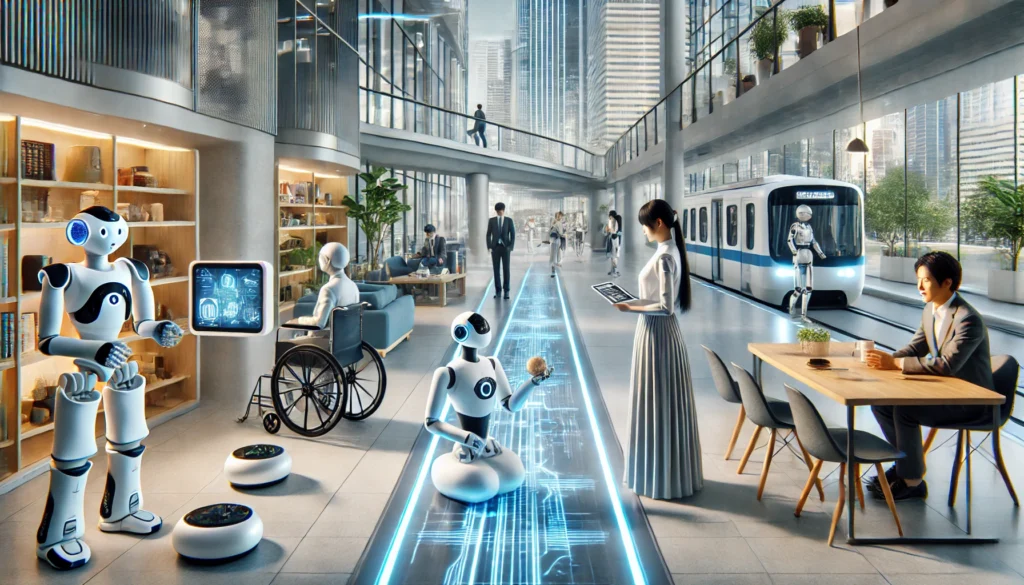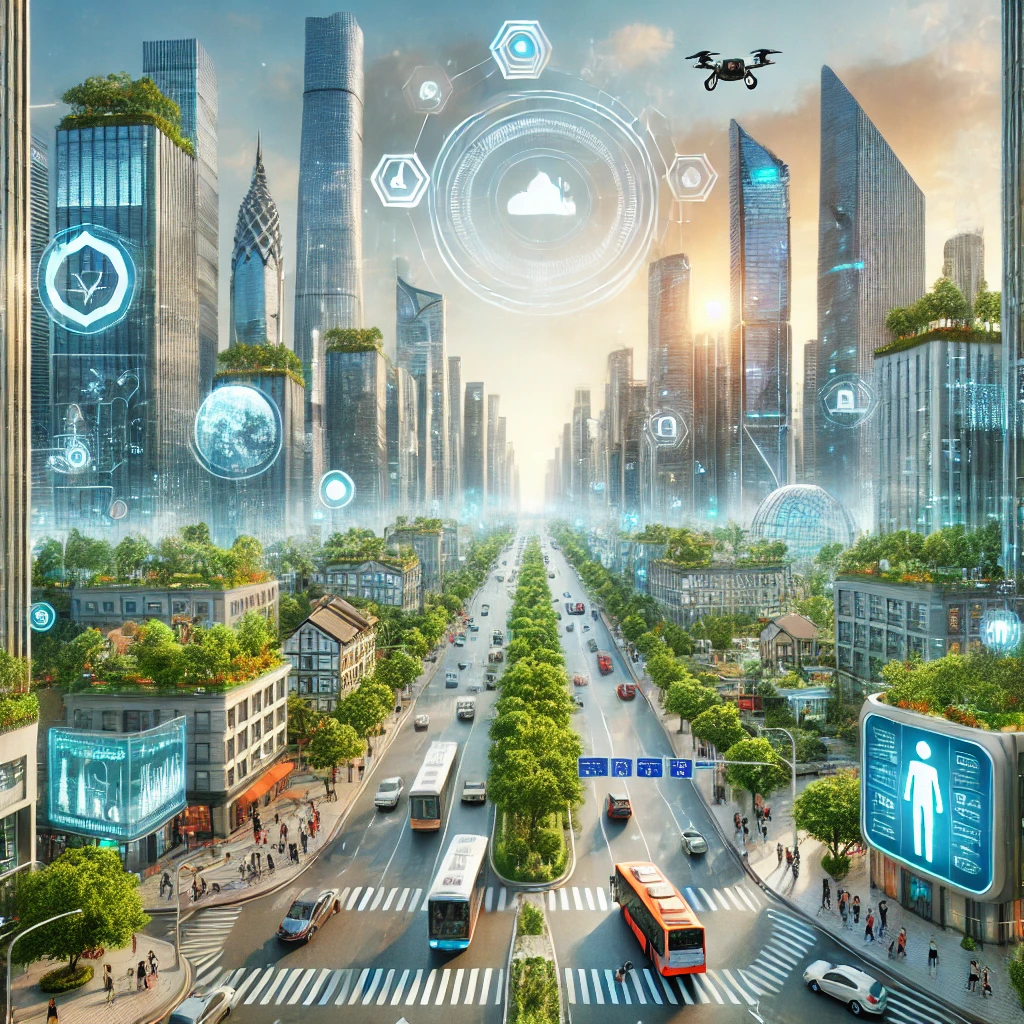Table of Contents
Introduction to Robotics in Japan
Japan has long been recognized as a global leader in technology and innovation, particularly in the field of robotics. This relationship with technology dates back to traditional practices, where artisans utilized mechanical devices to enhance their craftsmanship. Over the decades, Japan’s industrial landscape evolved, leading to a significant investment in research and development of robotic systems. Today, the nation stands at the forefront of robotics, showcasing numerous applications that shape the everyday lives of its citizens.
Throughout the years, Japan has achieved several notable milestones that have solidified its reputation as a pioneer in robotics. In the 1970s, the introduction of industrial robots began transforming manufacturing processes, significantly improving efficiency and reducing labor costs. The success of these early robotic systems paved the way for further innovation, leading to the development of more sophisticated machines capable of performing complex tasks. By the 1990s, Japan witnessed the advent of humanoid robots, such as ASIMO, developed by Honda, which showcased advanced mobility and human-like interaction.
In the 21st century, the integration of robotics into daily life has accelerated. Today, robots are employed in a variety of sectors, including healthcare, agriculture, and service industries. Japan’s proactive approach to addressing demographic challenges, such as an aging population, has resulted in an increased focus on robotic solutions designed to assist the elderly and improve their quality of life. Moreover, the collaboration between academia, government, and private sectors has further propelled Japan’s robotics landscape, ensuring sustained growth and innovation.
As Japan continues to embrace advancements in robotics, the nation remains committed to shaping a future where technology enhances everyday living, maintaining its status as a leader in the global robotics arena.

The Evolution of Robotics Technology
Japan has long been at the forefront of technological innovation, particularly in the field of robotics. The evolution of robotics technology in Japan can be traced back to the early 20th century, when the concept of automating tasks began to take shape primarily within the manufacturing sector. The introduction of the first programmable logic controller (PLC) in the 1960s marked a significant milestone that enabled factories to embrace automation, streamlining processes and improving efficiency.
During the 1970s, companies such as Kawasaki and FANUC began producing robotic arms designed for assembly lines, revolutionizing industrial production. These early robots were primarily focused on repetitive tasks such as welding and material handling, greatly reducing the risk of human error and increasing output rates. As technology progressed, by the 1980s and 1990s, Japan was home to a surge in advanced robotics research, driven by both private enterprises and academic institutions.
The introduction of sensor technology and artificial intelligence in the late 1990s led to a new era of robotics, paving the way for the development of more sophisticated machines capable of executing complex functions autonomously. Noteworthy advancements included the creation of the humanoid robot ASIMO by Honda in 2000, exhibiting remarkable capabilities such as walking, running, and even navigating stairs, which demonstrated the potential for robots to assist humans in daily activities.
In recent decades, Japan’s focus has shifted towards integrating robots into various aspects of everyday life. Companies like SoftBank have introduced social robots such as Pepper, designed to engage and assist users in their homes and workplaces. Academic collaborations, alongside government support for robotics research, continue to drive innovation in the country. Today, Japan not only leads the world in industrial automation but also continues to push the boundaries of robotics technology, ultimately shaping a future where robotics plays an integral role in daily life.
Robotics in Daily Life
Robotics have permeated various aspects of daily life in Japan, illustrating the nation’s commitment to technological advancement and innovation. One of the most prominent applications of robotics is observed in the healthcare sector. Robotic assistive technologies have been developed to support the elderly and those with disabilities, enhancing their quality of life. For instance, robotic exoskeletons are used to help individuals regain mobility and independence when they face difficulties in movement. These innovations have proven essential in assisting medical professionals, aiding in rehabilitation, and providing personalized care.
In addition to healthcare, personal companion robots have become a regular presence in households across Japan. These robots serve a variety of roles—from offering companionship to the elderly to helping children with learning tasks. Notable examples include the famous Aibo, a robotic dog that interacts with users and learns over time, fostering emotional connections. Meanwhile, companies like SoftBank have introduced Pepper, a humanoid robot designed to recognize faces and respond to human emotions, thus bridging the gap between technology and human interaction.
The hospitality and retail sectors have also embraced robotic technology, streamlining operations and enhancing customer service. In hotels, robots handle check-ins and deliver amenities to guests, increasing efficiency and allowing staff to focus on personalized service. Similarly, in retail environments, automated checkout systems and shelf-scanning robots help to ensure stock accuracy and improve the shopping experience. Such implementations highlight how robotics are not only enhancing operational aspects but also transforming the way consumers engage with services.
Through these diverse applications, Japan exemplifies the seamless integration of robotics into daily life. This technology continues to redefine interactions, ensure accessibility, and elevate convenience among the population, confirming Japan’s status as a global leader in robotics innovation.
Innovative Robotics Companies and Startups
Japan has long been recognized as a global leader in the field of robotics, with a diverse array of companies contributing to advancements that continue to shape daily life. Among the giants in the industry, Fanuc Corporation stands out, specializing in industrial automation and robotics. Renowned for its high-precision robotic arms, Fanuc has revolutionized manufacturing processes, significantly enhancing productivity and precision in various sectors.
Another prominent player is SoftBank Robotics, which has captured international attention with its humanoid robot, Pepper. Designed to interact with people, Pepper utilizes artificial intelligence to understand and respond to human emotions, making it a cherished companion in homes and enterprises alike. SoftBank’s focus on social robotics showcases the potential for robots to engage meaningfully within communities, paving the way for a more interactive human-robot relationship.
In addition to these established companies, Japan’s vibrant startup ecosystem is fostering a new generation of innovative robotics firms. Companies such as preferred networks are making strides in deep learning and AI, developing robots capable of complex tasks in logistics and healthcare. The emergence of such startups reflects a growing trend toward automation in everyday activities, transforming services and enhancing efficiency.
Another notable startup is ZMP Inc., which specializes in autonomous driving technology and logistics solutions. Their advancements in self-driving delivery robots represent a significant contribution to Japan’s urban landscape, addressing challenges related to transportation and accessibility. This innovative approach highlights how robotics are not just confined to factories but are becoming integral in urban settings.
The synergy between large corporations and emerging startups is propelling Japan’s robotics industry into the future. Together, they are fostering an environment where technology not only enhances productivity but also enriches everyday life. As these companies continue to innovate, they shape a future where robotics will play an even more significant role in our daily activities, illustrating Japan’s commitment to advancing technology across all facets of life.
Robotics in Education and Research
Japan has long been at the forefront of technological advancements, and its approach to robotics education is no different. Schools and universities across the nation have embraced robotics as a critical component of their curriculums, recognizing its potential to engage students and prepare them for the future job market. Educational programs focusing on robotics encourage innovation, critical thinking, and problem-solving skills among young learners, fostering a generation that is well-versed in advanced technologies.
Many primary and secondary schools incorporate robotics into their science and technology classes, using hands-on projects to ignite students’ interests. Through these programs, children learn fundamental programming and engineering principles, effectively bridging theoretical knowledge with practical application. As they build and program robots, students develop a deeper understanding of science, technology, engineering, and mathematics (STEM) subjects, which are crucial in today’s digital age.
Furthermore, robotics competitions play a significant role in nurturing young talent. Events such as the All Japan Robotics Competition challenge students to innovate and apply their skills in real-world scenarios. These competitions not only encourage collaboration but also foster a sense of community among participants. Engaging in these events allows students to showcase their abilities, gain hands-on experience, and learn from peers, enhancing their education and sparking long-term interest in robotics and technology.
On the research front, universities are heavily invested in robotics studies, with numerous teams dedicated to advancing the field. Ongoing research projects focus on various aspects of robotics, including artificial intelligence, human-robot interaction, and autonomous systems. By fostering a collaborative environment between academia and industry, Japan is working to ensure that new developments in robotics translate effectively into practical applications that will shape daily life.
In conclusion, robotics education in Japan is a vibrant field encompassing various programs, competitions, and research initiatives. These efforts are instrumental in shaping future innovators and leaders in technology, ultimately influencing the broader landscape of society.
Cultural Impact of Robotics in Society
Japan stands at the forefront of robotics innovation, and its cultural landscape is increasingly interwoven with these technological advancements. The societal perception of robots in Japan is notably distinct from that in many other countries. Japanese culture has historically embraced the concept of robots, often depicted in folklore and fiction as companions or helpers. This positive cultural backdrop has facilitated a generally favorable acceptance of robotic technology in daily life.
In various communities, robots are not merely viewed as tools but also as partners in enhancing quality of life. For instance, companion robots like Aibo and Pepper are designed to engage emotionally with users, leading to a transformation in human-robot interaction. This phenomenon is particularly significant in addressing social issues such as loneliness, especially among the elderly population. The incorporation of robots into households as companions illustrates how cultural norms are evolving, promoting acceptance of technology in personal relationships.
Furthermore, robotics significantly impacts work practices in Japan. Automation and robotic assistance in industries ranging from manufacturing to healthcare are reshaping the workforce. While some fear job displacement due to robots, many Japanese recognize the potential for increased efficiency and safety. The collaboration between humans and robots is regarded as a means to enhance productivity rather than a threat. This perspective underscores a cultural valuing of technology as an ally in achieving better work outcomes.
Overall, the integration of robotics into the fabric of Japanese society highlights how technology shapes cultural norms and values. As robots become more commonplace, they challenge traditional views on companionship and labor, fostering a more inclusive perspective towards the role of technology in daily life. The dynamic relationship between Japanese culture and robotics is a testament to the evolving nature of societal norms in the face of innovation.
Challenges and Ethical Considerations
The rapid advancement of robotics in Japan presents not only significant benefits but also crucial challenges and ethical considerations. One of the most pressing issues is job displacement. As robots continue to enhance productivity and efficiency in various sectors, concerns arise regarding the potential reduction of job opportunities for human workers. Industries such as manufacturing, agriculture, and service sectors are increasingly adopting robotic solutions, leading to greater automation. This shift raises questions about the workforce’s adaptability and the need for retraining programs to help individuals transition to new roles that may emerge alongside technological advancements.
Alongside job displacement, privacy concerns loom large. The integration of robots into everyday life often involves the collection and processing of vast amounts of personal data. From service robots in homes to companion robots for the elderly, the potential for invasions of privacy becomes a critical issue. Citizens must grapple with the balance between convenience and protecting their personal information. Robust data protection regulations and transparent data handling practices will be essential to mitigate these concerns and establish trust between technology developers and users.
Furthermore, the ethical considerations surrounding human-robot interaction demand careful attention. Questions about the appropriate roles of robots, particularly in sensitive environments such as healthcare and caregiving, highlight the need for guidelines governing human-robot relationships. Advocating for ethical practices ensures that robots complement rather than replace human interactions, preserving the dignity and well-being of individuals. As Japan continues to navigate these complex issues, fostering a framework that promotes responsible innovation in robotics will be imperative to ensure a balanced coexistence with technology in daily life.
Future Trends in Robotics
The landscape of robotics in Japan is rapidly evolving, driven by ongoing technological advancements and societal needs. As we look to the future, several key trends are likely to shape the robotics sector, fostering greater integration into daily life. Emerging technologies such as artificial intelligence (AI), machine learning, and the Internet of Things (IoT) will significantly enhance the capabilities of robots, making them more efficient and adaptable to various applications.
One prominent area poised for growth is in personal assistance robots. These machines are being developed to support the aging population in Japan, providing services such as companionship, caregiving, and assistance with daily tasks. With Japan’s demographic shift towards an older society, the demand for personal assistance robots will likely surge. Companies are increasingly focusing on creating robots that can navigate home environments and engage with users in a natural and intuitive manner.
Additionally, advancements in collaborative robots, or cobots, are expected to reshape workplace dynamics. These robots are designed to work alongside humans, enhancing productivity across industries such as manufacturing, logistics, and healthcare. As cobots become more sophisticated, they will be able to take on more complex tasks, leading to increased efficiency and safety in various work environments.
Moreover, the trend toward autonomous vehicles is gaining momentum. Japan continues to invest in the development of self-driving cars and drones, which are anticipated to become integral to transportation systems. Such innovations could revolutionize how people commute and receive goods, making transportation more efficient and reducing traffic congestion.
As these trends unfold, it is essential to balance technological advancement with ethical considerations and regulatory frameworks to ensure that robotics positively impacts society. The future of robotics in Japan holds great promise, with the potential to redefine everyday life significantly. In conclusion, the continuous evolution of this sector is expected to enhance productivity, support social needs, and ultimately improve the quality of life for many.
Conclusion: Japan’s Robotics as a Global Influence
Japan has firmly established itself as a global leader in the field of robotics, showcasing innovations that significantly enhance daily life and transform various sectors, such as healthcare, manufacturing, and service industries. The nation’s commitment to research and development, coupled with its distinctive cultural values that embrace technology, positions Japan as a pioneering model for other countries aiming to enhance their technological landscapes.
Throughout this exploration, we have observed how Japan’s robotics industry operates at the intersection of advanced engineering and societal needs. From humanoid robots designed for companionship to industrial robots that streamline production processes, Japan illustrates a forward-thinking approach that prioritizes human-robot collaboration. The harmonious integration of these technologies has not only improved efficiencies but has also addressed pressing challenges such as an aging population and labor shortages. The implications extend beyond mere functionality; they reflect a vision where technology serves to enrich human experience.

As global interest in robotics continues to rise, Japan’s influence is apparent in the adoption of its innovative practices worldwide. Countries looking to bolster their own technological advancements may study Japan’s emphasis on collaboration between academia, government, and industry, which has catalyzed investment in robotics research. The lessons and experiences gleaned from Japan can guide emerging robotics markets to innovate responsibly while ensuring societal benefits are prioritized.
In conclusion, Japan’s prowess in robotics not only shapes its own society but also serves as an inspirational blueprint for nations around the world. As robotics becomes increasingly central to societal development, Japan stands at the forefront, championing a future where technology and humanity coexist and thrive together.





